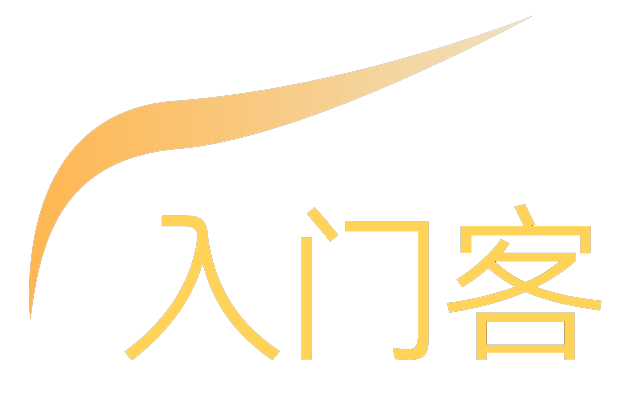PHP实现Collection数据集类及其原理
本文目录 :
PHP 语言最重要的特性之一便是数组了(特别是关联数组)。
PHP 为此也提供不少的函数和类接口方便于数组操作,但没有一个集大成的类专门用来操作数组。
如果数组操作不多的话,个别函数用起来会比较灵活,开销也小。
但是,如果经常操作数组,尤其是对数组进行各种操作如排序、入栈、出队列、翻转、迭代等,系统函数用起来可能就没有那么优雅了。
下面已实现的一个 Collection 类(数据集对象),来自 ThinkPHP5.0 的基础类 Collection,就是一个集大成的类。
1、 Collection源码
源码确实不错,也不是特别长,就全贴上了,方便阅读。跳到下面的 例子 结合看会比较好理解。
namespace think;
use ArrayAccess;
use ArrayIterator;
use Countable;
use IteratorAggregate;
use JsonSerializable;
class Collection implements ArrayAccess, Countable, IteratorAggregate, JsonSerializable
{
protected $items = [];
public function __construct($items = [])
{
$this->items = $this->convertToArray($items);
}
public static function make($items = [])
{
return new static($items);
}
public function isEmpty()
{
return empty($this->items);
}
public function toArray()
{
return array_map(function ($value) {
return ($value instanceof Model || $value instanceof self) ? $value->toArray() : $value;
}, $this->items);
}
public function all()
{
return $this->items;
}
public function merge($items)
{
return new static(array_merge($this->items, $this->convertToArray($items)));
}
/**
* 比较数组,返回差集
*/
public function diff($items)
{
return new static(array_diff($this->items, $this->convertToArray($items)));
}
/**
* 交换数组中的键和值
*/
public function flip()
{
return new static(array_flip($this->items));
}
/**
* 比较数组,返回交集
*/
public function intersect($items)
{
return new static(array_intersect($this->items, $this->convertToArray($items)));
}
public function keys()
{
return new static(array_keys($this->items));
}
/**
* 删除数组的最后一个元素(出栈)
*/
public function pop()
{
return array_pop($this->items);
}
/**
* 通过使用用户自定义函数,以字符串返回数组
*
* @param callable $callback
* @param mixed $initial
* @return mixed
*/
public function reduce(callable $callback, $initial = null)
{
return array_reduce($this->items, $callback, $initial);
}
/**
* 以相反的顺序返回数组。
*/
public function reverse()
{
return new static(array_reverse($this->items));
}
/**
* 删除数组中首个元素,并返回被删除元素的值
*/
public function shift()
{
return array_shift($this->items);
}
/**
* 把一个数组分割为新的数组块.
*/
public function chunk($size, $preserveKeys = false)
{
$chunks = [];
foreach (array_chunk($this->items, $size, $preserveKeys) as $chunk) {
$chunks[] = new static($chunk);
}
return new static($chunks);
}
/**
* 在数组开头插入一个元素
*/
public function unshift($value, $key = null)
{
if (is_null($key)) {
array_unshift($this->items, $value);
} else {
$this->items = [$key => $value] + $this->items;
}
}
/**
* 给每个元素执行个回调
*/
public function each(callable $callback)
{
foreach ($this->items as $key => $item) {
if ($callback($item, $key) === false) {
break;
}
}
return $this;
}
/**
* 用回调函数过滤数组中的元素
*/
public function filter(callable $callback = null)
{
if ($callback) {
return new static(array_filter($this->items, $callback));
}
return new static(array_filter($this->items));
}
/**
* 返回数组中指定的一列
*/
public function column($column_key, $index_key = null)
{
if (function_exists("array_column")) {
return array_column($this->items, $column_key, $index_key);
}
$result = [];
foreach ($this->items as $row) {
$key = $value = null;
$keySet = $valueSet = false;
if (null !== $index_key && array_key_exists($index_key, $row)) {
$keySet = true;
$key = (string) $row[$index_key];
}
if (null === $column_key) {
$valueSet = true;
$value = $row;
} elseif (is_array($row) && array_key_exists($column_key, $row)) {
$valueSet = true;
$value = $row[$column_key];
}
if ($valueSet) {
if ($keySet) {
$result[$key] = $value;
} else {
$result[] = $value;
}
}
}
return $result;
}
/**
* 对数组排序
*/
public function sort(callable $callback = null)
{
$items = $this->items;
$callback ? uasort($items, $callback) : uasort($items, function ($a, $b) {
if ($a == $b) {
return 0;
}
return ($a < $b) ? -1 : 1;
});
return new static($items);
}
/**
* 将数组打乱
*/
public function shuffle()
{
$items = $this->items;
shuffle($items);
return new static($items);
}
/**
* 截取数组
*/
public function slice($offset, $length = null, $preserveKeys = false)
{
return new static(array_slice($this->items, $offset, $length, $preserveKeys));
}
// ArrayAccess
public function offsetExists($offset)
{
return array_key_exists($offset, $this->items);
}
public function offsetGet($offset)
{
return $this->items[$offset];
}
public function offsetSet($offset, $value)
{
if (is_null($offset)) {
$this->items[] = $value;
} else {
$this->items[$offset] = $value;
}
}
public function offsetUnset($offset)
{
unset($this->items[$offset]);
}
//Countable
public function count()
{
return count($this->items);
}
//IteratorAggregate
public function getIterator()
{
return new ArrayIterator($this->items);
}
//JsonSerializable
public function jsonSerialize()
{
return $this->toArray();
}
/**
* 转换当前数据集为JSON字符串
*/
public function toJson($options = JSON_UNESCAPED_UNICODE)
{
return json_encode($this->toArray(), $options);
}
public function __toString()
{
return $this->toJson();
}
/**
* 转换成数组
*/
protected function convertToArray($items)
{
if ($items instanceof self) {
return $items->all();
}
return (array) $items;
}
}声明:该文观点仅代表作者本人,入门客AI创业平台信息发布平台仅提供信息存储空间服务,如有疑问请联系rumenke@qq.com。
- 上一篇: TP5中Db类与Model类关系
- 下一篇: NLTK学习笔记(三):NLTK的一些工具
copyright © 2008-2019 入门客AI创业平台 版权所有 备案号:湘ICP备2023012770号

